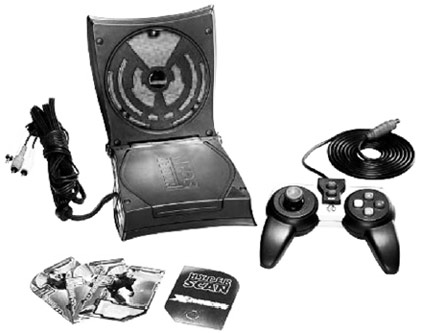Gaming the System: Dead on arrival: The strangest failed consoles
 CREDIT: MYDIGITALLIFE
CREDIT: MYDIGITALLIFEYeah, just stick to Barbies and Hot Wheels next time, Mattel.
Some ideas seem bad on paper but are assuaged into good ones with competent execution. And then there are ideas that should've been led off a cliff, Lemmingsstyle. Bad ideas in gaming haven't just limited themselves to games, but can be found in entire consoles. Despite the vastly larger risk of releasing a bad video game console, not much thought went into the conceiving and release of these turkeys.
Philips CD-i
We may as well begin on familiar ground. Quite infamous for its incredibly bad Legend of Zelda spin-off games, the result of a botched deal between Philips and Nintendo, the CD-i was nevertheless quite something else for 1991. And by “something else,” I mean a... thing that wasn't sure if it wanted to be a video game system, a music-multimedia device, or a severely limited home computer. The CD-i's controllers were all bizarre, one an awkward, spoon-shaped hunk of plastic. Of course, this being the '90s, the existence of newfangled CD technology meant a dearth of incredibly mediocre Full Motion Video games, titles that used an excessive amount of live-shot footage and shoddy gameplay as a means of touting technological superiority over their 16-bit counterparts. Ultimately, the CD-i was slammed with edutainment shovelware, and somehow managed to last until 1998, when Philips mercifully pulled the plug.
Apple Pippin
With the success of the iOS platform and the App store's large library of games (some actually good!), most wonder why Apple hasn't in some shape or form, released a dedicated closed system/ console for video games. And the answer to that wonderment is always the Apple Pippin (or, P!PP!N, if you're stupid). Essentially a PowerMac 6200 with the ability to do anything truly useful stripped away, the Pippin was meant to be a console platform that could be licensed out, by Apple, to manufacturers, sort of like the 3DO. And much like the 3DO, a high price point and an even more limited and awful library of games completely wiped out the Pippin from the market. Think what you might of Steve Jobs or the Mac platform, but the decision to take everything Apple off the licensing table was a wise, wise decision.
Mattel HyperScan
Launched in 2006, the Mattel HyperScan sought to offer supposedly budget gaming with its $70 price tag and a “keep 'em buying” tactic in the form of different RFID chips that could be bought separately to enhance the player's games, also sold separately. Kind of like the DLC you love to complain about buying, except as a physical product, and also a very bad idea. For about $50 more, you could've bought a PS2, which was more powerful and had a better library of games to choose from than the six games the HyperScan had.
Bonus Round: Hasbro NEMO
The NEMO truly was dead-on-arrival. Although I can't call it bad for the benefit of it having never been released, the NEMO is still worth mentioning as an unusual curio. Mainly the fact that it used, not cartridges, not CD-ROMs, not even LaserDiscs as its primary medium of storage, but video tapes. Yes, analog video tapes, which would open up a new avenue of gaming — the dreaded Full Motion Video. Although the deal between Hasbro and project head Tom Zito fell through, mainly due to the dropping costs of CD-ROM technology, we did end up getting the infamous Sega CD games Sewer Shark and Night Trap, both originally intended as NEMO releases.













